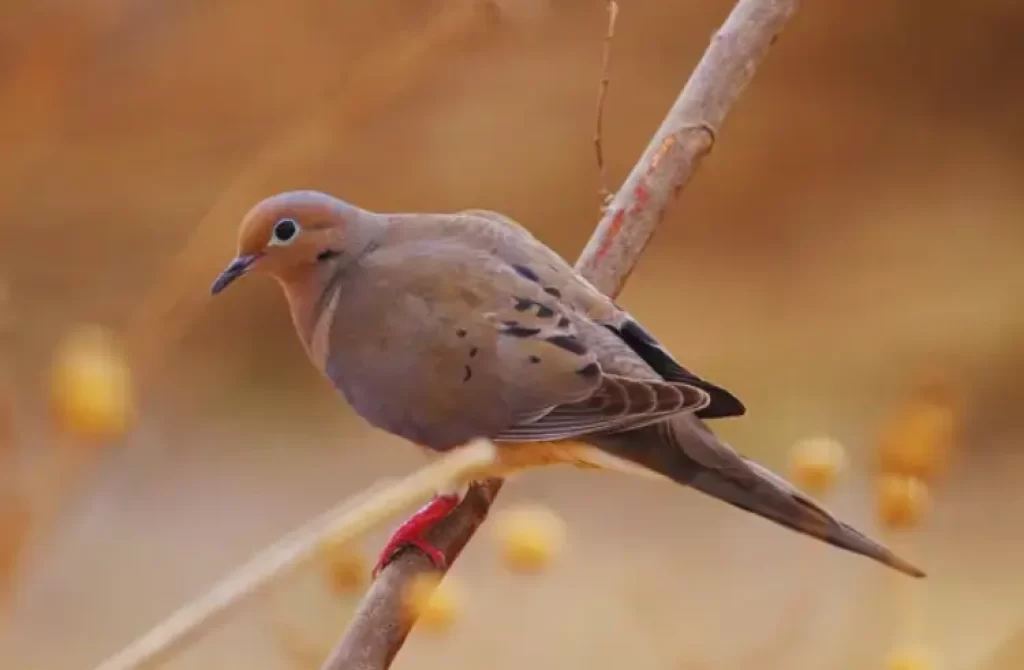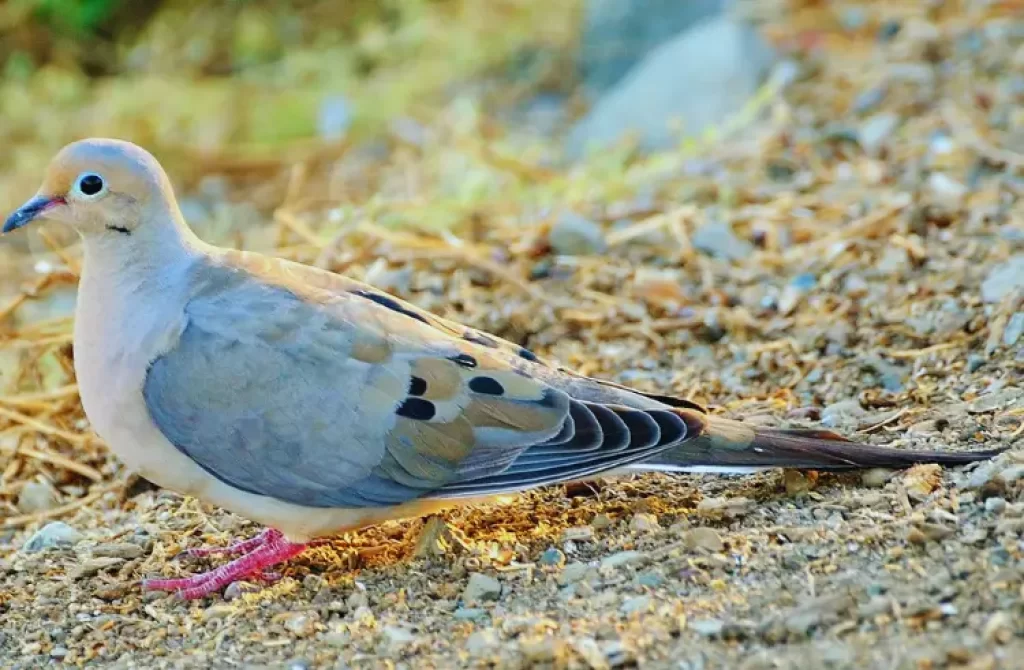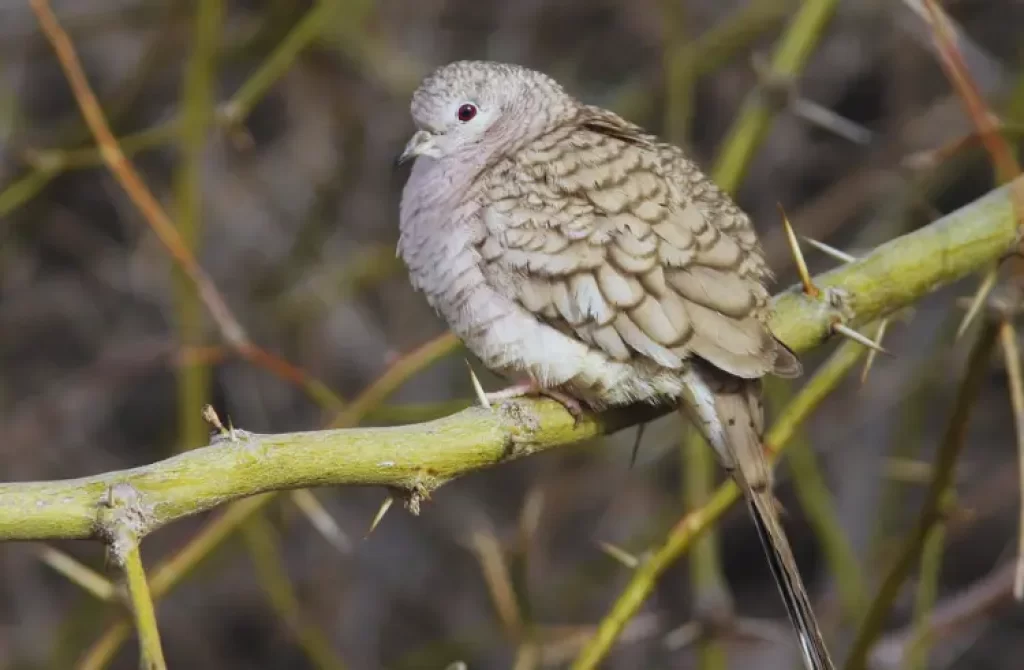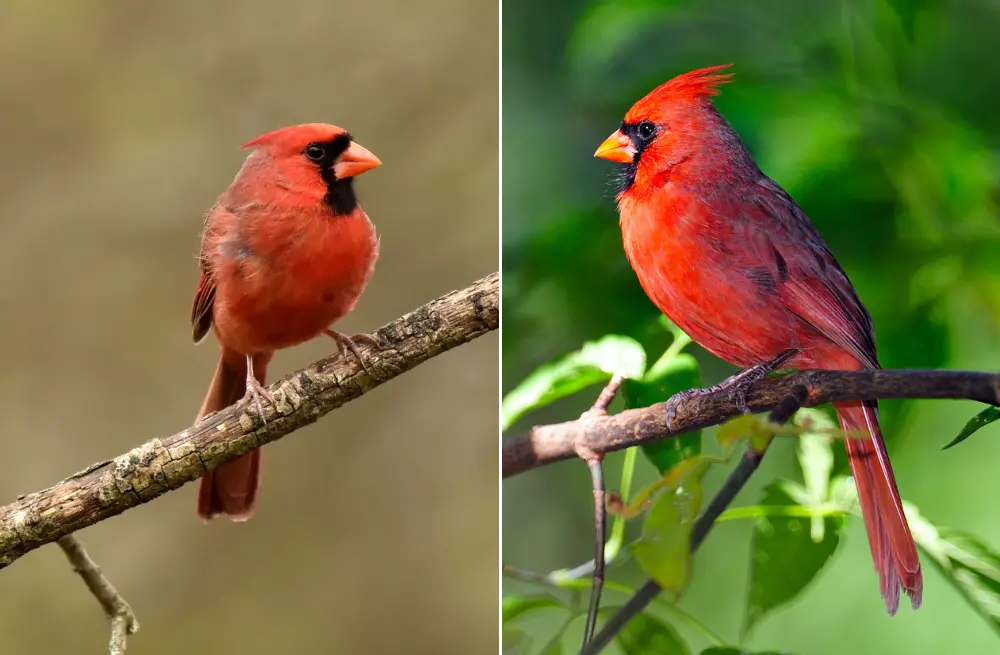When we think of a dove, an image of a peaceful white bird carrying an olive branch often comes to mind. However, it’s interesting to note that the term “dove” can also encompass the familiar White-crowned Pigeon found across the state of Florida in the United States.
Doves and pigeons belong to the same avian family known as Columbidae, which encompasses over 300 bird species. While they share common characteristics such as rounded bodies, short necks, and slender beaks, there are distinct differences between doves and pigeons. Generally, doves tend to be smaller in size, while pigeons often exhibit a larger and more robust stature.
Let’s take a look a few key differences between pigeons and doves:
Size and Appearance

Pigeons: Pigeons are typically larger and more robust in size. They have a stockier build with shorter wings, giving them a sturdier appearance.
Doves: In contrast, doves are generally smaller and possess a more slender and graceful physique. Their delicate features and proportions contribute to their elegant appearance.
Plumage
Pigeons: Pigeons often exhibit a wide range of colors and patterns in their plumage. Some species showcase iridescent feathers that shimmer and reflect light, adding a touch of brilliance to their appearance.
Doves: Doves, on the other hand, tend to have a softer and more muted color palette. Shades of gray, brown, and white are commonly observed, lending a gentle and subtle beauty to their feathers.
Habitat

Pigeons: Pigeons have proven to be highly adaptable to various environments, particularly urban settings. They can be found nesting on buildings, ledges, and other man-made structures, making cities their preferred habitat.
Doves: Doves, in contrast, are closely associated with natural habitats. They are commonly found in forests, woodlands, open areas, and other natural landscapes. Their preference for serene and less urbanized surroundings sets them apart from pigeons.
Behavior
Pigeons: Pigeons are known for their gregarious nature and tend to form large flocks. They exhibit social behavior, often seen congregating in busy urban areas and public spaces. Pigeons also possess strong homing instincts, allowing them to navigate long distances and find their way back to their nests.
Doves: Doves, on the other hand, are generally more solitary in nature or tend to gather in smaller groups. They prefer a quieter and more serene environment, often displaying a peaceful and calm demeanor.
Symbolism and Cultural Perception

Pigeons: Pigeons are commonly associated with urban environments and can sometimes be considered pests due to their presence in large numbers. Their prevalence in cities has led to mixed perceptions, ranging from admiration for their adaptability to concerns about their droppings and potential nuisance.
Doves: Doves hold symbolic significance in many cultures and are often associated with peace, love, and spirituality. They are revered for their gentle nature and are widely recognized as a universal symbol of harmony and tranquility.
While these differences help differentiate pigeons from doves, it’s important to note that there can be some overlap in characteristics between certain species. The diversity within the Columbidae family adds to the beauty and intrigue of these fascinating birds, showcasing the wonders of avian life.
Now, let’s delve into the fascinating world of doves and pigeons and explore some remarkable species that can be found in the vibrant landscapes of the United States:
Some species of doves and pigeons you can find in the U.S.

The United States is home to a variety of dove and pigeon species. Here are a few notable ones:
Mourning Dove (Zenaida macroura)
The mourning dove is one of the most widespread and commonly encountered dove species in the U.S. It has a soft, cooing call and is known for its graceful flight and slender build. Mourning doves can be found across all states of the U.S., inhabiting various habitats including woodlands, urban areas, and farmlands.
Rock Pigeon (Columba livia)
Also known as the common pigeon or city pigeon, the rock pigeon is a familiar sight in urban areas throughout the United States. Originally domesticated, rock pigeons have established feral populations and are known for their adaptability to city environments. They often roost and nest on buildings and ledges.
White-winged Dove (Zenaida asiatica)
Found primarily in the southern regions of the U.S., the white-winged dove is known for its distinctive white wing patches. It prefers habitats such as deserts, scrublands, and agricultural areas, and is commonly spotted in states like Texas, Arizona, and New Mexico.
Eurasian Collared-Dove (Streptopelia decaocto)
Introduced to North America in the 1980s, the Eurasian collared-dove has rapidly spread across the continent. With its grayish coloration, black collar, and distinctive cooing call, it can now be found in suburban and rural areas throughout much of the U.S.
Band-tailed Pigeon (Patagioenas fasciata)
The band-tailed pigeon is a larger species of pigeon found in parts of western North America. It inhabits coniferous forests and mountainous regions, and its populations can be observed in states such as California, Oregon, Washington, and Arizona.
Inca Dove (Columbina inca)

The Inca dove is a small, grayish-brown dove with a scaly appearance on its wings and back. It is primarily found in the southwestern states such as Arizona, New Mexico, and Texas. This species prefers arid habitats, including desert scrublands and urban areas.
White-tipped Dove (Leptotila verreauxi)
The white-tipped dove is a medium-sized dove with a grayish-brown body and a distinctive white-tipped tail. It is mainly found in southern Florida, particularly in the Everglades and other wooded areas. This species is known for its low-pitched and haunting hooting calls.
Common Ground-Dove (Columbina passerina)
The common ground-dove is a small and slender dove species with a sandy-brown body and a scaled pattern on its wings. It can be found in various southern states, including Florida, Texas, and Arizona. As its name suggests, it often forages on the ground in open areas such as grasslands and agricultural fields.
Ruddy Ground-Dove (Columbina talpacoti)
The ruddy ground-dove is a compact dove species with a reddish-brown body and a scaly pattern on its upperparts. It is primarily found in southern Texas and southern Florida, as well as in parts of the southwestern states. This species prefers scrubby habitats, open woodlands, and agricultural areas.
White-crowned Pigeon (Patagioenas leucocephala)
The white-crowned pigeon is a larger pigeon species with a bluish-gray body and a distinctive white crown on its head. It is native to the Florida Keys, the Caribbean, and parts of southern Florida. This pigeon is associated with tropical hardwood forests and mangrove swamps.
These are just a few examples of the diverse dove and pigeon species found across the United States. Exploring the avian biodiversity in different regions can be a rewarding experience for bird enthusiasts and nature lovers alike.
FAQ’s (Frequently Asked Questions)

Are doves always white?
No, doves are not always white. While the image of a white dove is commonly associated with peace and purity, it’s essential to note that doves come in a variety of colors and patterns. The specific coloration of doves can vary depending on the species.
For example, the common Rock Pigeon (Columba livia), which is often referred to as a pigeon, can display a wide range of colors. They can be found in shades of gray, brown, black, and even iridescent hues. Domesticated pigeons have been selectively bred for various colors and patterns, leading to even more diversity in their appearances.
Similarly, many dove species exhibit colors other than white. For instance, the Diamond Dove (Geopelia cuneata) has a beautiful combination of gray, white, and peachy colors. The Eurasian Collared Dove (Streptopelia decaocto) has a pale grayish-brown plumage with a distinctive black collar around its neck.
It’s important to remember that the color of a dove can vary depending on the species, and while white doves are often associated with symbolism, doves can showcase a captivating range of colors in nature.
Why are pigeons often called pests?
Pigeons are often called pests due to their ability to thrive in urban environments and form large populations.
They can cause problems by leaving droppings that corrode buildings and spread disease. Pigeons can also damage property, create maintenance issues in public spaces, and pose health risks.
In agricultural areas, they may harm crops. While not all pigeons are pests, their population density and associated issues contribute to this perception in urban settings. Effective management strategies can help mitigate conflicts between pigeons and humans.
Why are pigeons no longer domesticated?
Pigeons are no longer as extensively domesticated for several reasons. Technological advances in communication and transportation have reduced the need for messenger pigeons. Modern agricultural practices and shifting cultural preferences have also decreased their domestication.
Conservation efforts and urbanization have further limited their domestication. However, pigeon racing, exhibitions, and pet keeping remain popular among enthusiasts.
What does it mean when pigeons and doves are described as being granivorous or frugivorous?
When pigeons and doves are described as being granivorous, it means that their primary diet consists of grains and seeds. These birds have specialized beaks and digestive systems that allow them to efficiently consume and digest various types of seeds. Granivorous pigeons and doves often forage on the ground or feed on seeds found in trees and plants.
On the other hand, when pigeons and doves are described as being frugivorous, it means that their primary diet consists of fruits and berries. These birds have adaptations that enable them to consume and process fruits, including beaks designed for pecking and plucking fruits from trees or bushes.
Frugivorous pigeons and doves play an important role in seed dispersal as they consume fruits and then spread the undigested seeds through their droppings.
It’s worth noting that many pigeons and doves exhibit a mixed diet, incorporating both grains/seeds and fruits into their feeding habits. The classification of granivorous or frugivorous simply indicates their dietary preference and main source of nutrition.
What makes a pigeon a homing pigeon?
Homing pigeons are a specific breed known for their ability to find their way back home from distant locations. They have a strong homing instinct, navigate using landmarks and the Earth’s magnetic field, and undergo training to strengthen their skills. These pigeons possess genetic traits that enhance their homing abilities, setting them apart from other pigeon breeds.
How Long Do Pigeons Live?
Pigeons have an average lifespan of around 3 to 5 years in the wild. However, pigeons that are well-cared for in captivity can live much longer, with some reaching up to 15 years or more.
The lifespan of a pigeon can be influenced by various factors, including their environment, diet, access to healthcare, and protection from predators. Proper care and nutrition, along with a safe and stress-free living environment, can contribute to a longer and healthier life for pigeons.
How Long Do doves Live?
Doves generally have a longer lifespan compared to pigeons. In the wild, doves typically live between 5 and 15 years, depending on the species. However, with proper care and a suitable environment, doves can live even longer in captivity. Some species of doves have been known to live up to 20 years or more under favorable conditions.
Providing a balanced diet, regular veterinary check-ups, and a safe and stress-free living space can contribute to the overall health and longevity of doves.







